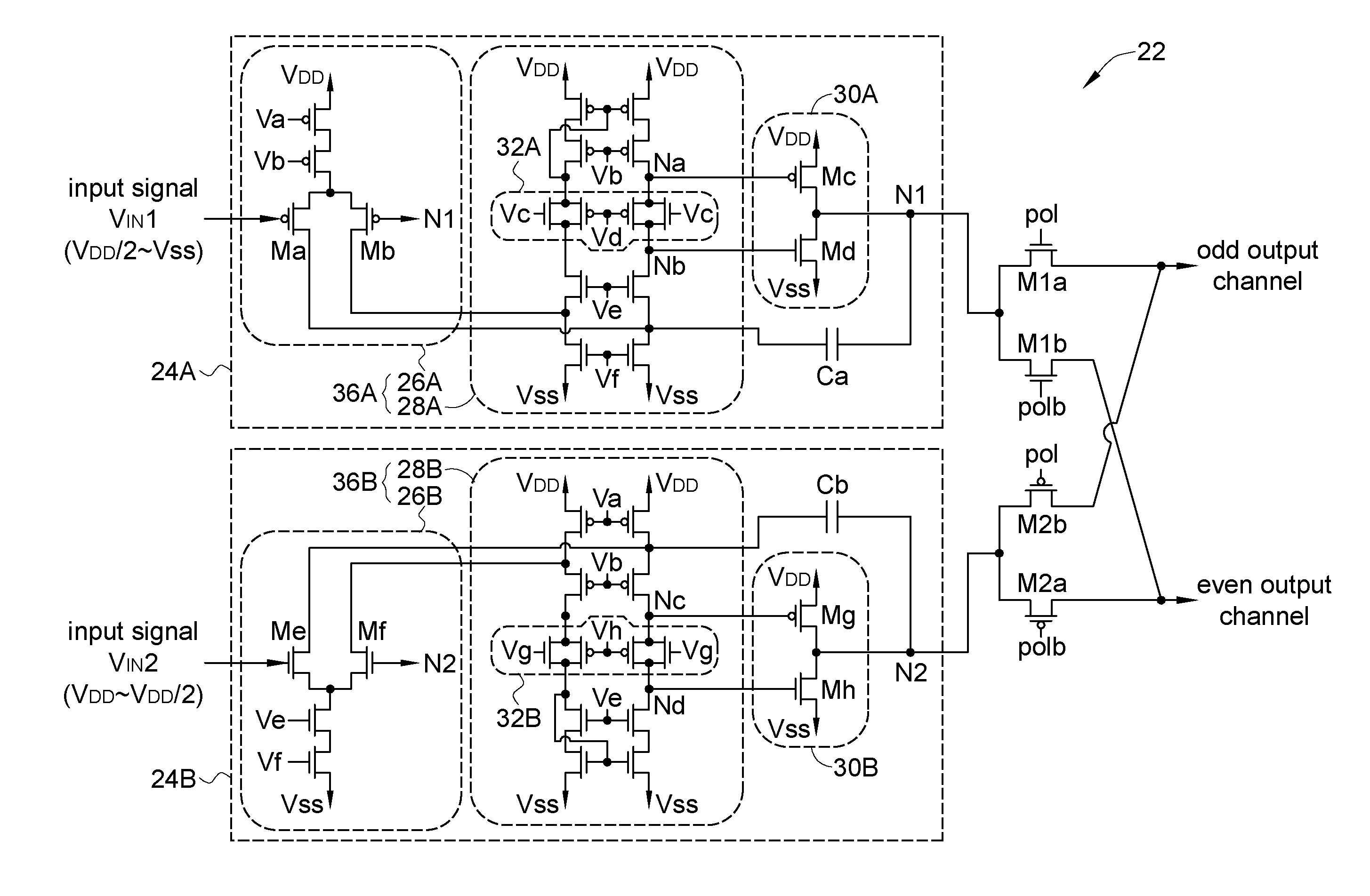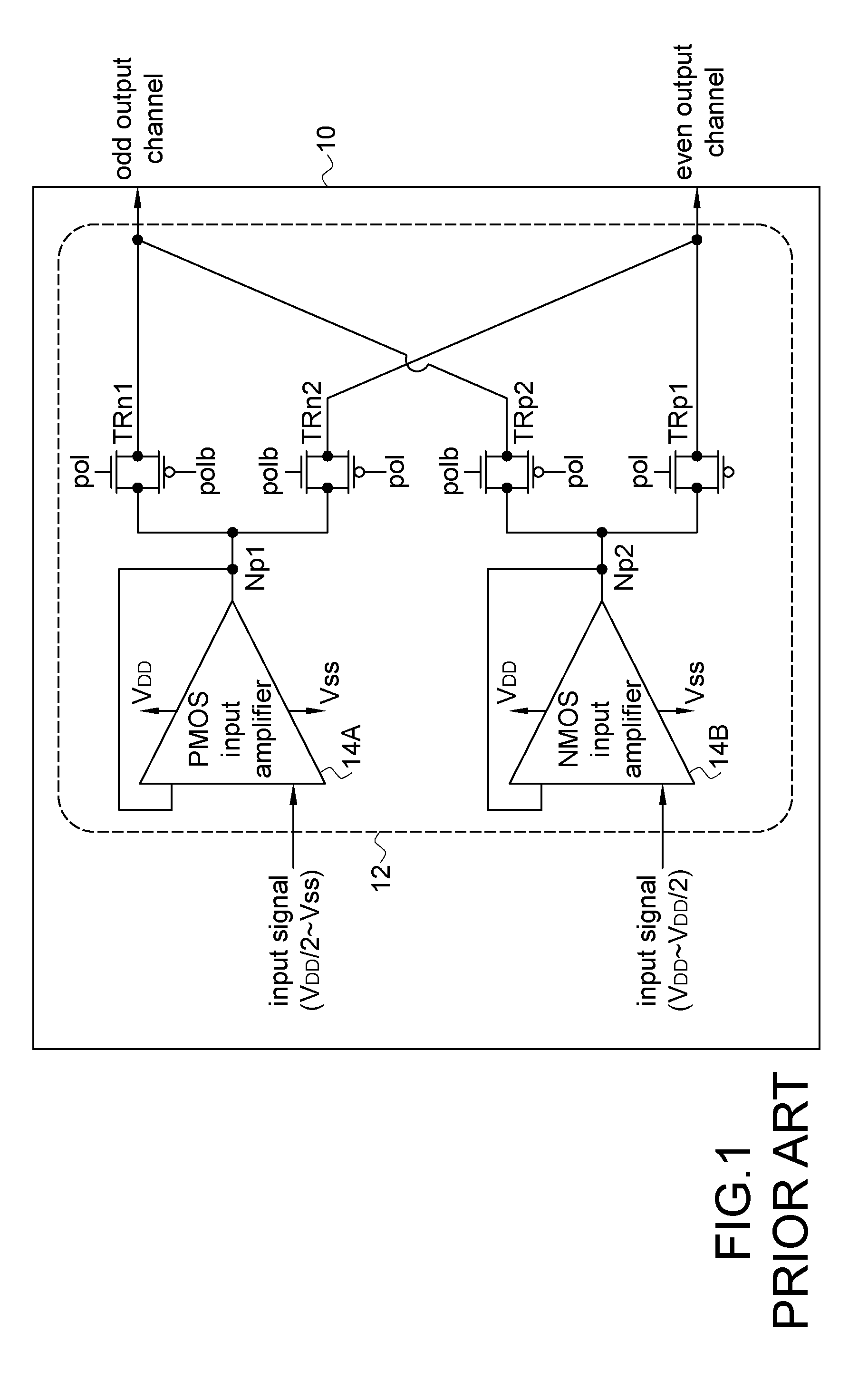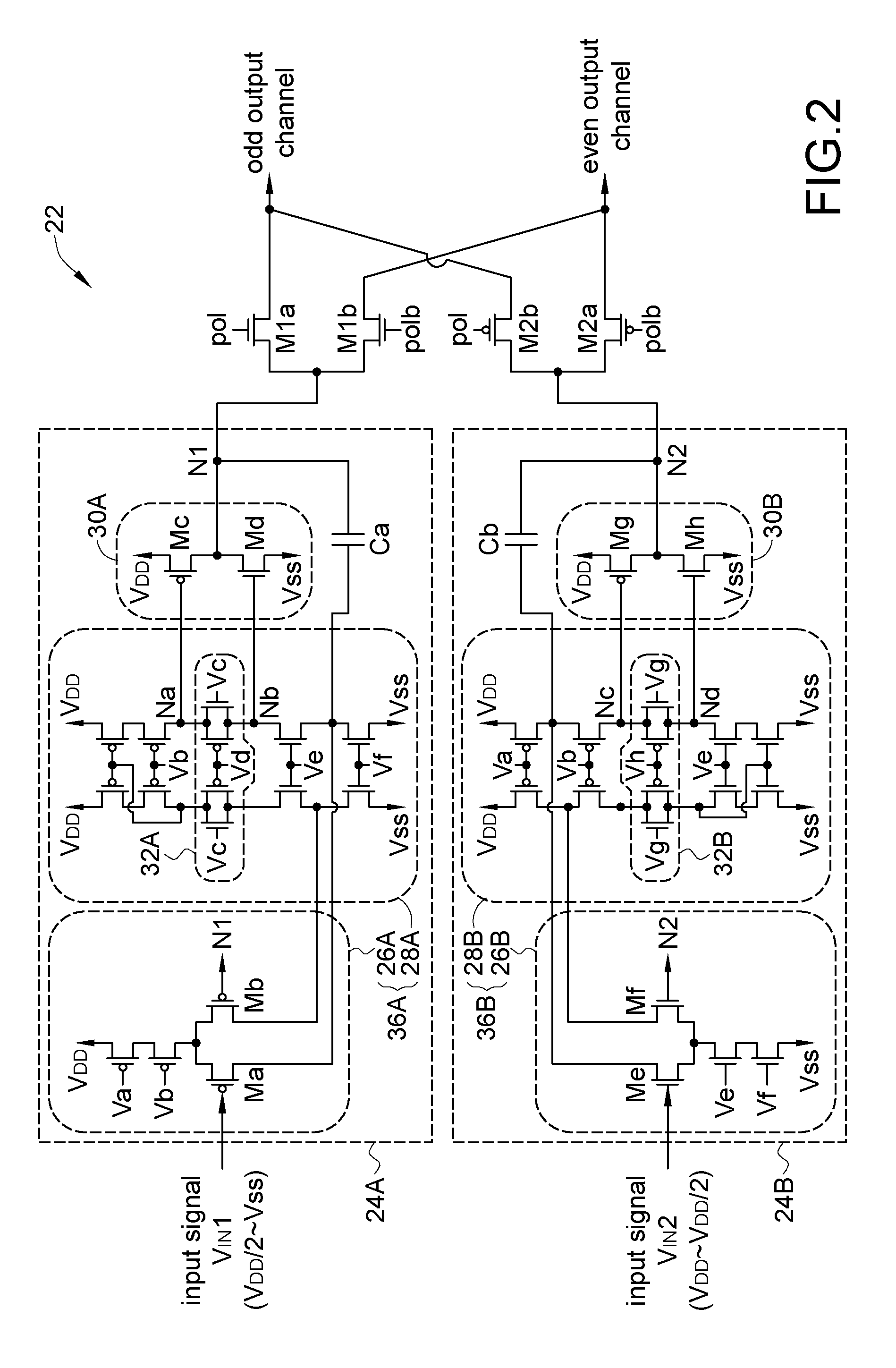Output stage and related logic control method applied to source driver/chip
a logic control and output stage technology, applied in logic circuits, pulse techniques, instruments, etc., can solve problems such as unsatisfactory integrity, unsatisfactory layout size, and adverse effects on the life span of transistors, so as to reduce the layout size of the polarization switching mechanism, improve the integrity of the source driver or source chip, and reduce the layout size of the mos transistor
- Summary
- Abstract
- Description
- Claims
- Application Information
AI Technical Summary
Benefits of technology
Problems solved by technology
Method used
Image
Examples
Embodiment Construction
The present invention will now be described more specifically with reference to the following embodiments. It is to be noted that the following descriptions of preferred embodiments of this invention are presented herein for purpose of illustration and description only; it is not intended to be exhaustive or to be limited to the precise form disclosed.
Please refer to FIG. 2, which illustrates circuitry of an embodiment of an output stage 22 according to the present invention. The output stage 22 is applicable to a source driver / chip such as a source chip of an LCD panel for source driving. As shown in FIG. 2, the output stage 22 is biased between operational voltages VDD and VSS and includes first and second output circuits 24A and 24B. The output circuit 24A receives an input signal VIN1 within a low swing range, e.g. a range between VDD / 2 and VSS, and drives to generate a negative polarization output signal at an output node N1 with a negative polarization driving voltage. On the ...
PUM
 Login to View More
Login to View More Abstract
Description
Claims
Application Information
 Login to View More
Login to View More - R&D
- Intellectual Property
- Life Sciences
- Materials
- Tech Scout
- Unparalleled Data Quality
- Higher Quality Content
- 60% Fewer Hallucinations
Browse by: Latest US Patents, China's latest patents, Technical Efficacy Thesaurus, Application Domain, Technology Topic, Popular Technical Reports.
© 2025 PatSnap. All rights reserved.Legal|Privacy policy|Modern Slavery Act Transparency Statement|Sitemap|About US| Contact US: help@patsnap.com



